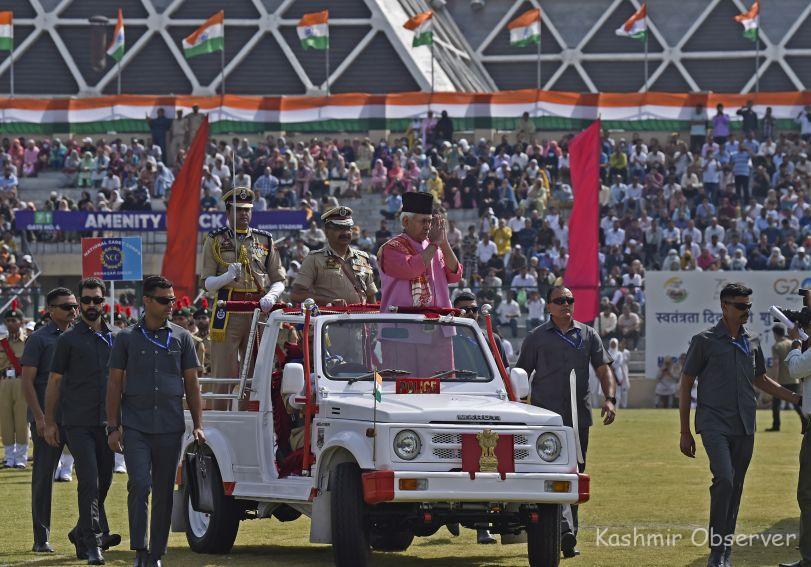
Speaking in parliament on August 10 in response to a debate on the non-confidence motion moved by opposition, the home minister Amit Shah made it clear that India wouldn’t hold dialogue with “Pakistan, Jamaat or Hurriyat.” Days before, Shehbaz Sharif, now former Pakistan Prime Minister, had made an offer to India to resume dialogue. And as home minister’s reaction shows, New Delhi feels now no need to engage Pakistan, let alone Hurriyat or Jama’at.
What is more, the home minister termed the revocation of the Article 370 as a turning point in Kashmir’s history. He pointed out that the change in the status of Kashmir was not merely legal, but also a step toward a unified identity that got rid of the dual flags and two constitutions.
Other measures highlighted by Shah – and which according to him had transformed Kashmir – included imposing restrictions on Hurriyat and Jama’at-e-Islami and removing separatist sympathizers from employment. He also referred to the government burial of militants, symbolizing a break from the past practice of publicizing funeral processions.
It is true that four years after the reading down of Article 370, the situation in Kashmir has altered beyond recognition, a prospect that appeared unthinkable earlier. On the face of it, the union territory looks like any other normal place. Kashmir Valley is no longer a witness to frequent protests, stone-pelting and shutdowns. Separatist politics has all but vanished. Tourism is booming, with over one crore tourists having visited the union territory in the last six months – albeit a substantial chunk of the visitors were pilgrims.
But does this make for a normalcy? It is not an easy question to answer. What we are witnessing is more like an extended absence of violence and unrest, laced with a sense of uncertainty. Though militant violence returns to the scene now and then, it has not detracted from the larger drift of normalcy.
Looking back at the last four years, the two trends have largely undergirded the current calm: one is the steady decline in the militancy and another is the growth in tourism. As for militancy, the number of militants, according to an estimate, has dwindled to less than 50. Over 550 militants have been killed in the region, most of them local youth, since the withdrawal of Article 370. By this yardstick, if there was no replenishment either locally or from across the border, the militancy could very well be on its way out.
However, the occasional spikes in militant violence in Jammu division since 2021 have confronted the security forces with a different challenge. A low-key revival of militancy in the region is seen as an attempt by Pakistan to shift the theatre of war away from Kashmir which has the highest concentration of troops. But it is also true that overall militancy has remained strictly within the manageable levels. It hasn’t escalated to a point where it could tip the union territory into turmoil again.
The Lieutenant Governor Manoj Sinha was referring to this fact when he recently said in an interview that in the last four years “Kashmir has travelled a distance” that no one could have imagined. He said that the government had framed a roadmap of the next 25 years about the changes going to happen in the union territory, which he didn’t elaborate.
And given the prevailing situation on the ground, Sinha wasn’t far from truth – atleast in its broad features. The once-vaunted separatist conglomerate Hurriyat has become extinct. Many of the grouping’s top leaders continue to be in jail or are under house arrest. This has hobbled its capacity to organize any political activity.
But even if the separatist leaders were free – and some of them are free – the situation would hardly be different. The government has outlawed any sign of separatist activity in whatever form and disproportionately raised the costs for any leader or an activist to go out and champion the cause.
Where do we go from here? It looks unlikely things would go back to square one – atleast in the immediate past. The union government has come up with an administrative template to pacify Kashmir that it seems loathe to let go. Hence, perhaps the delay in holding Assembly elections. With around eight months to go before the general elections, there is no sign that the Assembly polls will be held in the UT during this period. And as things stand, there is little hope that they could be held even after the parliamentary polls. That is, should the BJP retain the power.
Follow this link to join our WhatsApp group: Join Now
Be Part of Quality Journalism |
Quality journalism takes a lot of time, money and hard work to produce and despite all the hardships we still do it. Our reporters and editors are working overtime in Kashmir and beyond to cover what you care about, break big stories, and expose injustices that can change lives. Today more people are reading Kashmir Observer than ever, but only a handful are paying while advertising revenues are falling fast. |
| ACT NOW |
| MONTHLY | Rs 100 | |
| YEARLY | Rs 1000 | |
| LIFETIME | Rs 10000 | |









